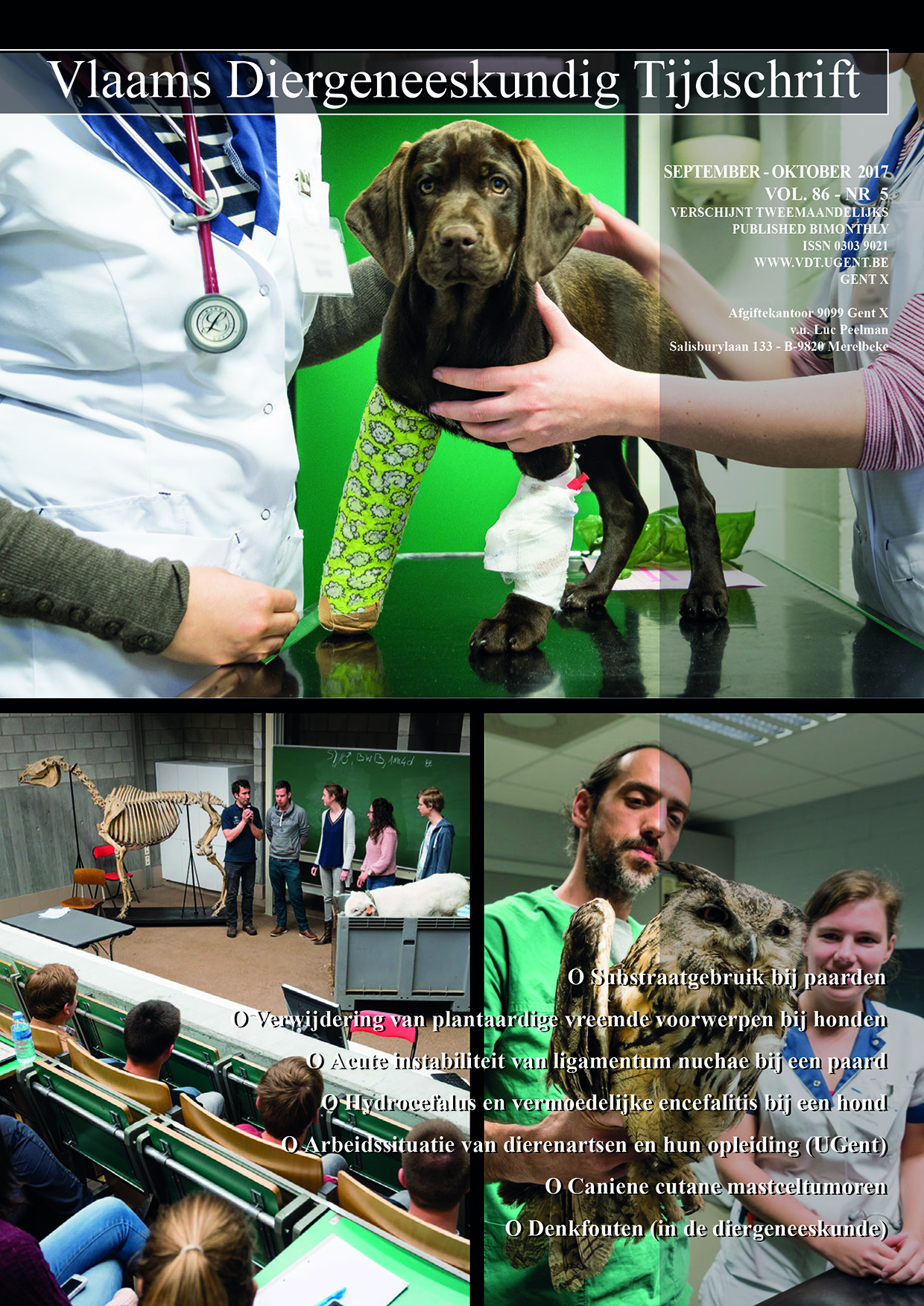Canine cutaneous mast cell tumors
DOI:
https://doi.org/10.21825/vdt.v86i5.16171Abstract
Canine cutaneous mast cell tumors (cMCT) are a commonly encountered neoplasia in small animal practice. Ninety-six percent of the cMCT can be diagnosed with cytology. Because of the variating biological character, it’s difficult to establish a prognosis. Therefore, the prognosis is assessed with multiple prognostic factors: tumor location, systemic complaints, metastases, histological and cytological grading, proliferation markers, KIT-staining pattern, KIT-mutation and tumor free margins. The treatment of choice is based upon the results of these prognostic factors, the clinical stage and the tumor location. Possible treatments include surgery, radiotherapy, chemotherapy, electrochemotherapy, tyrosine kinase inhibitors, cryotherapy and intraregional therapy with deionized water.Downloads
Published
2017-10-29
Issue
Section
Continuing Education


